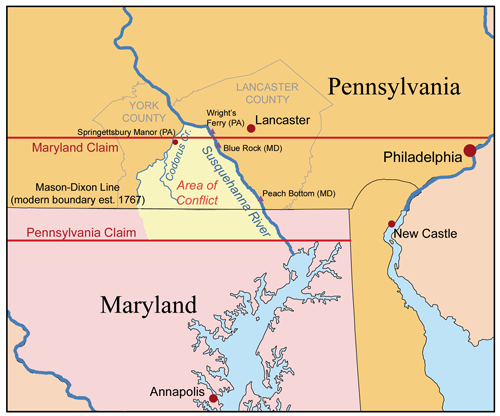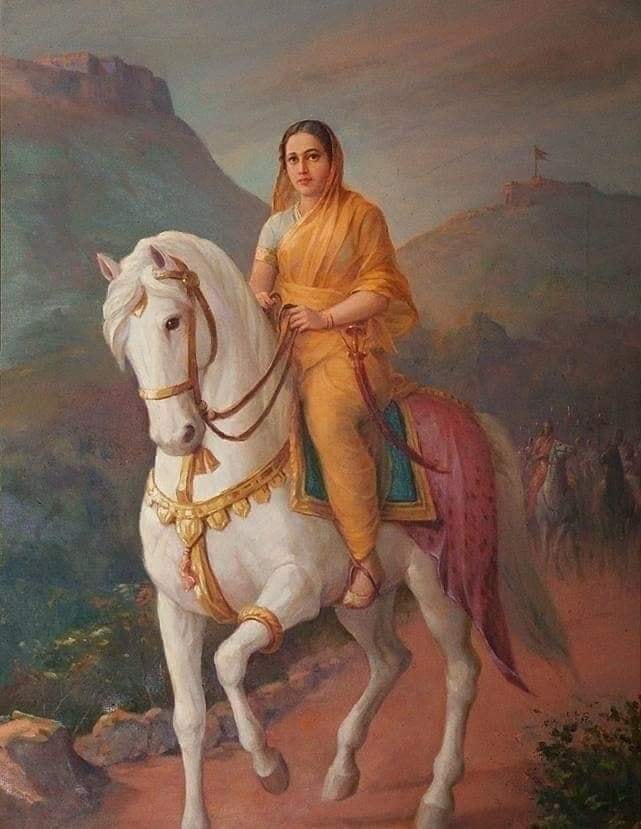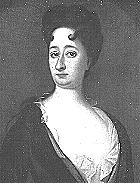|
Dorothea Maria Lösch
Dorothea Maria Lösch (1730 – 2 February 1799) was a Swedish master mariner, known for the incident during the Russo-Swedish War (1788–1790) in which she commandeered a Swedish ship during a crisis. She was the first female in Sweden to be given the rank of Kapten in the Swedish Navy (approximately the equivalent of lieutenant commander in the British Navy). Her name has also been spelled Losch and Läsch. Dorothea Maria Lösch was the daughter of the goldsmith Henrik Jakob Lösch from Stockholm and Dorothea Maria Beyms and married in 1756 to the Finnish sea captain Mårten Johan Thesleff: her spouse's name was also spelled Theslöf or Theslef. She had eleven children during her marriage. She was the author of a medical book of how to treat smallpox, ''Beskrivning af et bepröfvat medel emot Kopp-ärr'' (Stockholm, 1765). Dorothea Maria Lösch took over and commanded the ship ''Armida'' to safety after its officers had been killed or abandoned it during the Battle of Svensk ... [...More Info...] [...Related Items...] OR: [Wikipedia] [Google] [Baidu] |
Dorothea Maria Losch, By Isak Wacklin
Dorothea, also spelt Dorothee (German), Dorothée (French), and Dorotea, is a female given name from Greek (Dōrothéa) meaning "god's gift". In English it is more commonly spelt Dorothy. People with this name include: Aristocracy * Countess Palatine Dorothea Sophie of Neuburg Dorothea Sophie of Neuburg (5 July 1670 – 15 September 1748) was Duchess of Parma from 1695 to 1727 by marriage to Francesco, Duke of Parma. She served as Regent of the Duchy of Parma for her grandson Charles of Spain between 1731 and 1735 ... (1670–1748), Duchess of Parma * Dorotea Gonzaga (1449–1468), Duchess consort of Milan * Dorothea, Abbess of Quedlinburg (1591–1617), Princess-Abbess of Quedlinburg * Dorothea Friederike of Brandenburg-Ansbach (1676–1731), last Countess of Hanau * Dorothea Hedwig of Brunswick-Wolfenbüttel (1587–1609), Princess of Brunswick-Wolfenbüttel, and Princess of Anhalt-Zerbst by marriage * Dorothea Maria of Anhalt (1574–1617), Duchess of Saxe-Weimar * ... [...More Info...] [...Related Items...] OR: [Wikipedia] [Google] [Baidu] |
1730 Births
Events January–March * January 30 (January 19 O.S.) – At dawn, Emperor Peter II of Russia dies of smallpox, aged 14 in Moscow, on the eve of his projected marriage. * February 26 (February 15 O.S.) – Anna of Russia (Anna Ioannovna) becomes reigning Empress of Russia following the death of her cousin Emperor Peter II. * February 28 – Vitus Bering returns to the Russian capital of Saint Petersburg after completing the First Kamchatka expedition. * March 5 – The 1730 papal conclave to elect a new Pope for the Roman Catholic church begins with 30 Cardinals, 12 days after the death of Pope Benedict XIII. By the time his successor is elected on July 12, there are 56 Cardinals. * March 9 – General Nader Khan of Persia opens the first campaign of the Ottoman–Persian War (1730–1735), guiding the Persian Army from Shiraz and starting the Western Persia Campaign against the Ottoman Empire. * March 12 – John Glas is deposed from ... [...More Info...] [...Related Items...] OR: [Wikipedia] [Google] [Baidu] |
People Of The Russo-Swedish War (1788–1790)
The term "the people" refers to the public or common mass of people of a polity. As such it is a concept of human rights law, international law as well as constitutional law, particularly used for claims of popular sovereignty. In contrast, a people is any plurality of persons considered as a whole. Used in politics and law, the term "a people" refers to the collective or community of an ethnic group or nation. Concepts Legal Chapter One, Article One of the Charter of the United Nations states that "peoples" have the right to self-determination. Though the mere status as peoples and the right to self-determination, as for example in the case of Indigenous peoples (''peoples'', as in all groups of indigenous people, not merely all indigenous persons as in ''indigenous people''), does not automatically provide for independent sovereignty and therefore secession. Indeed, judge Ivor Jennings identified the inherent problems in the right of "peoples" to self-determination, as i ... [...More Info...] [...Related Items...] OR: [Wikipedia] [Google] [Baidu] |
18th-century Swedish Military Personnel
The 18th century lasted from 1 January 1701 (represented by the Roman numerals MDCCI) to 31 December 1800 (MDCCC). During the 18th century, elements of Enlightenment thinking culminated in the Atlantic Revolutions. Revolutions began to challenge the legitimacy of monarchical and aristocratic power structures. The Industrial Revolution began mid-century, leading to radical changes in human society and the environment. The European colonization of the Americas and other parts of the world intensified and associated mass migrations of people grew in size as part of the Age of Sail. During the century, slave trading expanded across the shores of the Atlantic Ocean, while declining in Russia and China. Western historians have occasionally defined the 18th century otherwise for the purposes of their work. For example, the "short" 18th century may be defined as 1715–1789, denoting the period of time between the death of Louis XIV of France and the start of the French Revolution, ... [...More Info...] [...Related Items...] OR: [Wikipedia] [Google] [Baidu] |
18th-century Swedish Scientists
The 18th century lasted from 1 January 1701 (represented by the Roman numerals MDCCI) to 31 December 1800 (MDCCC). During the 18th century, elements of Enlightenment thinking culminated in the Atlantic Revolutions. Revolutions began to challenge the legitimacy of monarchical and aristocratic power structures. The Industrial Revolution began mid-century, leading to radical changes in human society and the environment. The European colonization of the Americas and other parts of the world intensified and associated mass migrations of people grew in size as part of the Age of Sail. During the century, slave trading expanded across the shores of the Atlantic Ocean, while declining in Russia and China. Western historians have occasionally defined the 18th century otherwise for the purposes of their work. For example, the "short" 18th century may be defined as 1715–1789, denoting the period of time between the death of Louis XIV of France and the start of the French Revolu ... [...More Info...] [...Related Items...] OR: [Wikipedia] [Google] [Baidu] |
Women In War In Sweden
A woman is an adult female human. Before adulthood, a female child or adolescent is referred to as a girl. Typically, women are of the female sex and inherit a pair of X chromosomes, one from each parent, and women with functional uteruses are capable of pregnancy and giving birth from puberty until menopause. More generally, sex differentiation of the female fetus is governed by the lack of a present, or functioning, ''SRY'' gene on either one of the respective sex chromosomes. Female anatomy is distinguished from male anatomy by the female reproductive system, which includes the ovaries, fallopian tubes, uterus, vagina, and vulva. An adult woman generally has a wider pelvis, broader hips, and larger breasts than an adult man. These characteristics facilitate childbirth and breastfeeding. Women typically have less facial and other body hair, have a higher body fat composition, and are on average shorter and less muscular than men. Throughout human history, traditional ge ... [...More Info...] [...Related Items...] OR: [Wikipedia] [Google] [Baidu] |
Women In 18th-century Warfare
Women have contributed to military activities including as combatants. The following list describes women known to have participated in military actions in the 18th century. For women in warfare in the United States at this time, please see Timeline of women in war in the United States, pre-1945. Timeline of women in warfare from 18th century warfare worldwide (except the present US) 18th century * 1700–1721: An unnamed woman serves in the Swedish army in the Great Northern War; after the war, she is seen wearing men's clothing on the streets of Stockholm until the 1740s, where she was known as "The Rider". * 1700s: Tomasa Tito Condemayta acts as a military strategist and leader of a woman's battalion during Rebellion of Túpac Amaru II. * 1700s: Maria Ursula d'Abreu e Lencastro joined the Portuguese navy dressed as a man under the name Balthazar do Conto Cardoso, sailed for Portugal, joined the army, and took part in battles in India. * 1700s: Ingela ... [...More Info...] [...Related Items...] OR: [Wikipedia] [Google] [Baidu] |
1799 Deaths
Events January–March * January 9 – British Prime Minister William Pitt the Younger introduces an income tax of two shillings to the pound, to raise funds for Great Britain's war effort in the French Revolutionary Wars. * January 17 – Maltese patriot Dun Mikiel Xerri, along with a number of other patriots, is executed. * January 21 – The Parthenopean Republic is established in Naples by French General Jean Étienne Championnet; King Ferdinand I of the Two Sicilies flees. * January 27 – French Revolutionary Wars: Macau Incident – French and Spanish warships encounter a British Royal Navy escort squadron in the Wanshan Archipelago of China inconclusively. * February 9 – Quasi-War: In the single-ship action of USS ''Constellation'' vs ''L'Insurgente'' in the Caribbean, the American ship is the victor. * February 28 – French Revolutionary Wars: Action of 28 February 1799 – British Royal Navy frigate HMS ''Sybille'' defeats the French frigate ''Forte' ... [...More Info...] [...Related Items...] OR: [Wikipedia] [Google] [Baidu] |
Swedish Navy Officers
Swedish or ' may refer to: Anything from or related to Sweden, a country in Northern Europe. Or, specifically: * Swedish language, a North Germanic language spoken primarily in Sweden and Finland ** Swedish alphabet, the official alphabet used by the Swedish language * Swedish people or Swedes, persons with a Swedish ancestral or ethnic identity ** A national or citizen of Sweden, see demographics of Sweden ** Culture of Sweden * Swedish cuisine See also * * Swedish Church (other) * Swedish Institute (other) * Swedish invasion (other) * Swedish Open (other) Swedish Open is a tennis tournament. Swedish Open may also refer to: * Swedish Open (badminton) * Swedish Open (table tennis) * Swedish Open (squash) * Swedish Open (darts) {{disambiguation ... {{disambig Language and nationality disambiguation pages ... [...More Info...] [...Related Items...] OR: [Wikipedia] [Google] [Baidu] |
Johan Tietrich Schoultz Målning Slaget Vid Svensksund
{{disambiguation ...
Johan may refer to: * Johan (given name) * ''Johan'' (1921 film), a Swedish film directed by Mauritz Stiller * Johan (2005 film), a Dutch romantic comedy film * Johan (band), a Dutch pop-group ** ''Johan'' (album), a 1996 album by the group * Johan Peninsula, Ellesmere Island, Nunavut, Canada * Jo-Han, a manufacturer of plastic scale model kits See also * John (name) John ( ) is a common male name in the English language ultimately of Biblical Hebrew, Hebrew origin. The English form is from Middle English ''Ioon'', ''Ihon'', ''Iohn, Jan'' (mid-12c.), itself from Old French ''Jan'', ''Jean'', ''Jehan'' (Moder ... [...More Info...] [...Related Items...] OR: [Wikipedia] [Google] [Baidu] |
Margareta Von Ascheberg
Margareta von Ascheberg (9 July 1671 – 26 October 1753) was a Swedish countess, landowner, and acting regiment colonel during the Great Northern War. Early life and marriage Margareta von Ascheberg was the youngest named child of Field Marshal Rutger von Ascheberg and Maria Eleonora von Busseck. She had 24 siblings, but only nine of them lived to adulthood. On 26 January 1691, the 19-year-old Margareta von Ascheberg married the 27-year-old Colonel Kjell Christopher Barnekow (13 December 1663 – 19 December 1700), a fellow count, in Malmö. As was the custom of many Swedish noblewomen of that time, she kept her surname after marriage, styling herself as ''Grevinnan Ascheberg'' (Countess Ascheberg). Like her mother, Margareta was constantly pregnant during her marriage; after suffering several miscarriages, she gave birth to five children in just six years, one of whom died in infancy. She frequently accompanied her spouse on his military commissions, giving birth to their ... [...More Info...] [...Related Items...] OR: [Wikipedia] [Google] [Baidu] |
Brita Hagberg
Brita Christina Hagberg, née Nilsdotter, alias ''Petter Hagberg'' (c. 1756 – 19 March 1825), was a woman who served as a soldier in the Swedish army during the Russo-Swedish War (1788–1790). She is one of two confirmed women to have been decorated for bravery in battle in Sweden before women were allowed into the military in the 20th century. Biography Hagberg is believed to have been born in Finnerödja. She arrived in Stockholm in 1777, where she married Anders Peter Hagberg (1753–1816), a soldier of the guard, in 1785. Her husband was called to serve in the war in 1788. She enlisted in the army dressed as a man under the name Petter Hagberg in search for her husband, because she had heard nothing of him since the beginning of the war. War service She participated in the Battle of Svensksund (1790) and in the Battle of Vyborg Bay as a marine soldier. At this battle, there was "at least one woman in a fighting position", and that was Hagberg. She was stationed to serve o ... [...More Info...] [...Related Items...] OR: [Wikipedia] [Google] [Baidu] |





